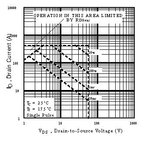schmitt trigger
Advanced Member level 5

Re: help! IRF3205 burning at only 25 Amper
It is far better to use a snubber, and/or gate drive adjustment to limit the dv/dt.
There is an excellent app note on TI's website to calculate snubbers. Do a google search.
Tranzorb devices, in my experience, are very capable with high energy pulses, but not with repetitive ones.
- - - Updated - - -
I was looking again at the schematic you had provided earlier...It is a little fuzzy, but are the gate resistors really 100K???
It is far better to use a snubber, and/or gate drive adjustment to limit the dv/dt.
There is an excellent app note on TI's website to calculate snubbers. Do a google search.
Tranzorb devices, in my experience, are very capable with high energy pulses, but not with repetitive ones.
- - - Updated - - -
I was looking again at the schematic you had provided earlier...It is a little fuzzy, but are the gate resistors really 100K???







